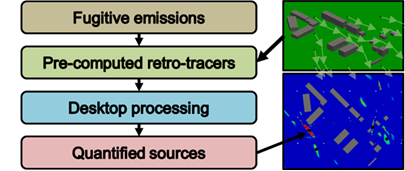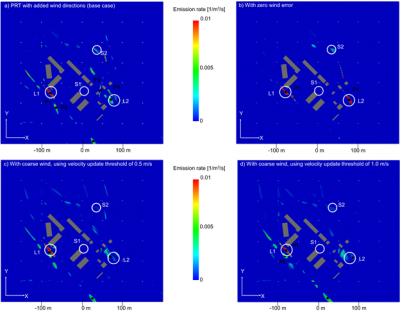As a follow-up to previous work, Ph.D Graduate Carol A. Brereton and Prof. Matthew Johnson, along with co-author Lucy J. Campbell from the Mathematics and Statistics Department at Carleton University, have published a new research paper in Atmospheric Environment: X that investigates a technique that could enable near real-time detection and quantification of fugitive emission sources on an ongoing basis.
Fugitive releases, such as leaking valves or fittings, are important sources of greenhouse gases that can usually be eliminated economically through repair and maintenance. However, this is only possible once they are noticed and located, which can be difficult in facilities that may have several miles of pipe and hundreds or thousands of fittings. The need for skilled labour and expensive equipment mean leak detection and repair (LDAR) programs can be expensive to implement on a regular basis. Fugitive sources can persist for months or longer without being detected.

Source locations predicted with varying levels of wind simplification and error using quickly computed PRT method. Major source locations L1 and L2 found in each case
Continuous and automatic detection and quantification of leaks using a sparse network of methane sensors, potentially requiring no personnel onsite, could vastly reduce this timeframe. The amount of data processing required, however, has been one of the difficulties with such an approach. This paper demonstrates how reusable pre-computations on approximate wind fields can be used to reduce processing time by a factor of several hundred, making detection and quantification of unknown leak(s) within a complex facility feasible on a desktop computer. For facilities with a fixed sensor network, this raises the possibility of near-continuous identification and quantification of leaks as they arise.